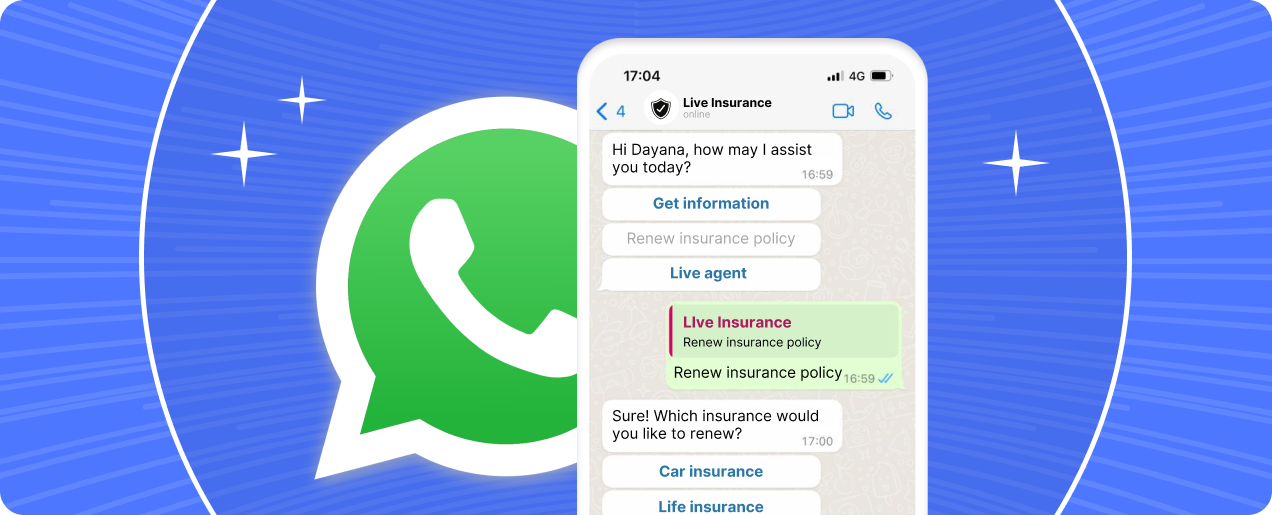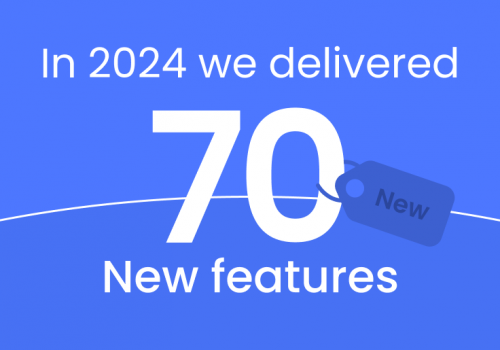Introduction to AI Chatbots and WhatsApp Business
Customer service is crucial in the competitive insurance market. Conversational AI is a gateway to a new journey in customer interaction. By adopting AI chatbots and technologies, you can streamline customer communications and raise their level of satisfaction, happy customers equal future growth. This article explores conversational AI and how it can transform your insurance company’s customer service operations. Let’s explore this exciting journey together.
A New Proposal
Mr James heads a leading insurance company; he’s just received a proposal from his CTO, Sarah, recommending the integration of conversational AI into their customer service operations. Sceptical and unconvinced, he asks his secretary Janice to call Sarah for a discussion. As he awaits, he feels a mix of impatience and concern. Impatient because he’s seen countless technology trends come and go, promising the moon but not consistently delivering the goods. He’s also concerned because, as the CEO, his primary responsibility is to the company’s bottom line, and he’s sure this will place a significant dent in his budget!
The Discussion
Sarah walks into Mr James’ office armed with data, examples, and a strong belief in the power of conversational AI.
“Arah, I got your proposal about these AI chatbots. Convince me. Why should we invest in this technology?” Mr James begins.
“Mr James, conversational AI will revolutionise our customer service. It will enhance our efficiency, provide 24/7 availability, save costs, and deliver personalised interactions. I can break it down for you and show you about the numerous ways our customers reach out to us,” Sarah replies.
“We already have multiple communication channels—phone, email, and social media. What else do we need for pigeon mail? Why do we need AI?” he asks.
“Well, imagine consolidating all those channels into one streamlined platform. Conversational AI and WhatsApp Business can integrate seamlessly, providing a unified customer experience. Our clients can get support via their preferred channel—whether it’s WhatsApp, Facebook Messenger, or our website—without any drop in service quality,” Sarah explains.
“In fact, according to a study by Forrester, companies using AI chatbots saw a 50% increase in customer engagement across multiple channels.”
“That’s all very impressive, but how does this affect our current setup? It sounds extremely time-consuming and complicated. It’s sure to disrupt our operations.”
Rest assured, Mr James. The integration process is not a disruptive force, but a smooth transition. We can introduce the AI systems gradually, while still maintaining our existing channels. This will ensure a seamless transition for both our team and our customers, instilling confidence in the change.
“Fine, but how does it work? The brain behind this technology?” Mr. James probes.
“It’s all about Natural Language Understanding (NLU) and Natural Language Generation (NLG). NLU helps the AI understand customer inquiries, while NLG allows it to generate human-like responses. This duo ensures our customers feel heard and get accurate information quickly,” Sarah elaborates.
“Gartner predicts that by 2025, 50% of enterprises will spend more on bots and chatbot creation than traditional mobile app development.”
“Just how reliable are these systems? Can they handle complex insurance conversations?” Mr James asks.
“Absolutely. Conversational AI is designed to manage intricate dialogues, keep track of context, and provide relevant answers. It can handle everything from basic policy queries to complex claim procedures, ensuring our customers always get the right information,” Sarah asserts.
“IBM reports that businesses using AI for customer service saw a 70% reduction in call, chat, and email inquiries, freeing human agents for more complex tasks.”
“These AI systems really understand and handle complex insurance conversations?” Mr James repeats.
“Yes, they can. Conversational AI is built to manage intricate dialogues, keep track of context, and provide relevant answers. Whether it’s basic policy queries or complex claim procedures, the AI ensures customers always get accurate information,” Sarah assures.
“In addition, IBM reports that businesses using AI for customer service saw a 70% reduction in call, chat, and email inquiries, freeing up human agents for more complex tasks.”
Benefits of Conversational AI
“Let’s talk about benefits. How will this impact our customer service?” Mr James responds.
“Here are several key benefits:
- Enhanced Efficiency: AI can manage thousands of interactions simultaneously, reducing wait times.
- 24/7 Availability: Our customers can access support anytime, boosting satisfaction.
- Cost Savings: Automation reduces the need for large customer service teams, saving on operational costs.
- Personalised Interactions: AI uses data to personalise responses, making customers feel valued.
- Improved Accuracy: NLU and NLG minimise, ensuring customers get reliable information. A study by Juniper Research found that chatbots are expected to save businesses over $8 billion annually by 2022.”
“These benefits sound great, but I’m concerned about the cost. How expensive is it to implement conversational AI?” Mr James worries.
“While there is an initial investment, the long-term savings are substantial. Automation reduces the need for a large customer service team, and the efficiency gains translate into cost savings. Plus, the improved customer satisfaction and retention rates contribute to a healthier bottom line,” Sarah explains.
“Right, how does this help our team directly?” Mr. James continues.
“By handling routine inquiries, AI chatbots free our human agents to manage more complex issues, improving the overall service quality. Moreover, AI can assist agents with real-time information and suggestions, making their jobs easier and more efficient,” Sarah outlines.
“In fact, I read a report that Salesforce discovered that 64% of agents using AI chatbots can spend most of their time solving complex problems, compared to only 50% of agents not using AI.”
“So, it appears like our team will actually benefit from this technology,” Mr James notes.
“Exactly. It enhances their capabilities and allows them to focus on what they do best—solving complex issues and providing excellent service,” Sarah affirms.
Conclusion
“I must admit, Sarah, you made a compelling case. Let’s move forward with the integration,” Mr James concedes.
“You won’t regret it, Mr James. This is the future of customer service, and we’re getting ahead of the curve,” Sarah concludes.
Integrating conversational AI into your insurance company’s customer service strategy is not just an upgrade; it’s a revolution. By embracing NLU and NLG technologies, you can provide efficient, personalised, and around-the-clock support, setting your company apart. Turbo drives your customer service team and elevates the customer experience to new heights with conversational AI.




















